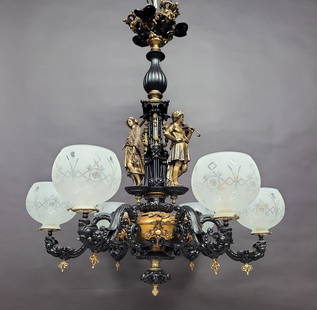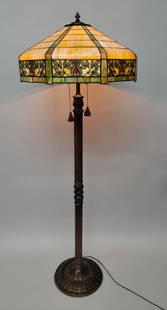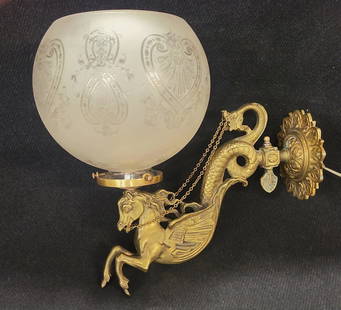

 Discovery- InteriorsBonhamsSponsored.Your ad here?
Discovery- InteriorsBonhamsSponsored.Your ad here?



Discovery- Interiors
Bonhams
Sponsored.Your ad here?


 Discovery- InteriorsBonhamsSponsored.Your ad here?
Discovery- InteriorsBonhamsSponsored.Your ad here?



Discovery- Interiors
Bonhams
Sponsored.Your ad here?

Roman Marble Head of a Goddess
Similar Sale History
View More Items in Home & DécorRelated Home & Décor
More Items in Home & Décor
View More






Item Details
Description
Roman, Imperial Period, ca. 1st to 3rd century CE. A finely sculpted marble head of a beautiful goddess, possibly Proserpina or Ceres (Greek equivalents being Persephone or Demeter) - presenting a delicate visage comprised of almond-shaped eyes, finely modeled facial planes, petite ears, and closed lips all upon a long, slender neck and crowned by an elaborate, centrally parted plaited coiffure pulled back beneath a diadem, and continuing behind her head where it is gathered into a low chignon with trailing tresses falling to the nape of her neck. The sculptor of this piece modeled the beautiful goddess of the harvest with the utmost sensitivity and skill. Size: 2.125" H (5.4 cm); 3.75" H (9.5 cm) on included custom stand.
The goddess is depicted with her head tipped ever so slightly to the right, her attractive coiffure, parted at the center and swept back, frames her forehead with painstakingly delineated plaited tresses that conjure waves of grain - apropos for a goddess of agriculture. The goddess' elegant, oval face is skillfully modeled so as to present a naturalistic visage with a rounded forehead, large doe eyes that were most likely once vividly painted so as to define the irises and pupils, a fine browline that arches gracefully and merges with the bridge of her nose, a soft rounded chin, and pursed lips.
The worship of Ceres and Prosperina (Greek goddesses Demeter and Persephone) was very popular in ancient Sicily - an island known for its agriculture that supplied grain to Magna Graecia. Ceres was revered as a goddess of agriculture, and in addition to her associations with the underworld, Proserpina - queen of the underworld, daughter of Jupiter (Zeus) and the harvest goddess Ceres, and wife of Hades - is also associated with spring as the vegetation goddess. Furthermore, Prosperina and her mother Ceres were central figures in the Eleusinian mysteries. These were elaborate festivals that took place every five years. Unfortunately, scholars know little about them as those who attended the Eleusinian Mysteries were sworn to secrecy. This said, most agree that the central theme of these Mysteries was that just as the grain returns every spring following its harvest and the winter hibernatory period, the soul returns after the death of the human body, reincarnated for the next life. The Eleusinian Mysteries were not the only Mysteries of the Greco-Roman world. There were also the Mysteries of Dionysos depicted in a famous fresco just outside Pompeii at Herculaneaum (the so-called Villa of the Mysteries) as well as Mysteries of various imported eastern gods such as Sabazios and Isis.
Provenance: private Millburn, New Jersey, USA collection
All items legal to buy/sell under U.S. Statute covering cultural patrimony Code 2600, CHAPTER 14, and are guaranteed to be as described or your money back.
A Certificate of Authenticity will accompany all winning bids.
We ship worldwide to most countries and handle all shipping in-house for your convenience.
#136568
The goddess is depicted with her head tipped ever so slightly to the right, her attractive coiffure, parted at the center and swept back, frames her forehead with painstakingly delineated plaited tresses that conjure waves of grain - apropos for a goddess of agriculture. The goddess' elegant, oval face is skillfully modeled so as to present a naturalistic visage with a rounded forehead, large doe eyes that were most likely once vividly painted so as to define the irises and pupils, a fine browline that arches gracefully and merges with the bridge of her nose, a soft rounded chin, and pursed lips.
The worship of Ceres and Prosperina (Greek goddesses Demeter and Persephone) was very popular in ancient Sicily - an island known for its agriculture that supplied grain to Magna Graecia. Ceres was revered as a goddess of agriculture, and in addition to her associations with the underworld, Proserpina - queen of the underworld, daughter of Jupiter (Zeus) and the harvest goddess Ceres, and wife of Hades - is also associated with spring as the vegetation goddess. Furthermore, Prosperina and her mother Ceres were central figures in the Eleusinian mysteries. These were elaborate festivals that took place every five years. Unfortunately, scholars know little about them as those who attended the Eleusinian Mysteries were sworn to secrecy. This said, most agree that the central theme of these Mysteries was that just as the grain returns every spring following its harvest and the winter hibernatory period, the soul returns after the death of the human body, reincarnated for the next life. The Eleusinian Mysteries were not the only Mysteries of the Greco-Roman world. There were also the Mysteries of Dionysos depicted in a famous fresco just outside Pompeii at Herculaneaum (the so-called Villa of the Mysteries) as well as Mysteries of various imported eastern gods such as Sabazios and Isis.
Provenance: private Millburn, New Jersey, USA collection
All items legal to buy/sell under U.S. Statute covering cultural patrimony Code 2600, CHAPTER 14, and are guaranteed to be as described or your money back.
A Certificate of Authenticity will accompany all winning bids.
We ship worldwide to most countries and handle all shipping in-house for your convenience.
#136568
Condition
A section from a larger sculpture. Expected surface wear with nicks and abraded areas - particularly to the edge of the diadem and high pointed areas of coiffure and face - commensurate with age. Losses to nose, lips, and chin as shown. Earthen and mineral deposits grace the surface as well.
Buyer's Premium
- 24.5%
Roman Marble Head of a Goddess
Estimate $900 - $1,400
6 bidders are watching this item.
Shipping & Pickup Options
Item located in Louisville, CO, usSee Policy for Shipping
Payment

Related Searches
TOP































































